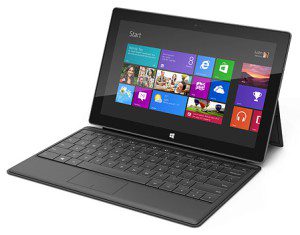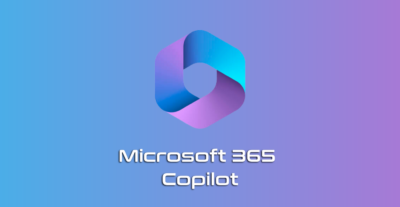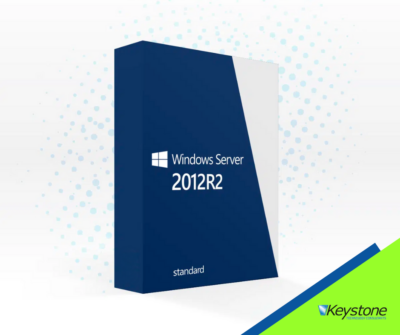 I recently wrote about the new Microsoft Windows 8 “RT” Surface Tablet after a few days of use.
I recently wrote about the new Microsoft Windows 8 “RT” Surface Tablet after a few days of use.
This is the first time Microsoft has manufactured a computer since they started as a software company nearly 4 decades ago.
To recap… I was surprised that the hardware was so good and that the software was so poor. The Surface release coincides with the new release of the Windows 8, a reimagining of the world’s most popular operating system. Windows 8 enables the tablet to run with tiles that can be swiped with your fingers or switch to the traditional desktop environment.
While I focused on the hardware in part 1, today we’ll focus on the software, Windows 8. I have taken a little more time for the software review because I wanted to a) get used to it and b) give Microsoft a chance to update some glitches, which in some cases they have.
First of all, you need to set your expectations… this tablet will not run your full Windows applications like QuickBooks, Access databases, ERP software clients, etc. It will only run specially developed software intended for it, with full screen use, touch interfaces, etc. Don’s assume you can do everything that your current laptop does, just like you can’t do everything on an iPad that you can on a Mac. However, there are 5 applications you can fully run, not surprisingly Microsoft’s Word, Excel, PowerPoint, OneNote, and Internet Explorer. Other than that, you cannot install traditional Windows applications unless you buy the Surface “PRO” version that will hit the stores soon at a starting price of $899.
Once you get past these significant limitations, here are some other issues I encountered with the version of Windows 8 (RT) for the Surface:
- There is a lack of variety of apps in the app store. I do not need a lot of apps, and do not play games, so that did not matter to me as much as it may to you. But I looked for general database apps, mind mapping tools, a Visio like app, some project management tools, etc. and there aren’t a lot of good choices. It may get better, but developers may hold off on the special requirements to write and publish apps this way until they see a sizable market – and so far the Surface is not flying off the shelves. It is a “chicken and egg” problem. And before you say “Apple’s first app store was also very small when IOS was released” that is true, but nobody expected apps at the time, even Steve Jobs himself thought that HTML 5 apps were going to dominate, but his team talked him into a store for native apps. Now people expect apps when they get the device because Apple and Android both have a huge library of choices.
- There is no speech capabilities for commands – the inclusion of Siri by Apple, and Android’s use of speech commands are very helpful once you start using them. Oddly enough Microsoft includes an excellent speech to text capability in Windows for free, but did not include it here.
- The native RT version of Internet Explorer (not the desktop one) will not display numerous pages very well. Surprisingly, among these is Microsoft Exchange 2013 Outlook Web Access.
- Outlook was not included in the Office suite. In a huge oversight, Microsoft left Outlook out in the cold when it came to bundling applications from the Office suite. Many road warrior types who would want this device live in Outlook, so its exclusion is odd.
But Microsoft did include native RT apps for mail, calendar, and people (contacts) similar to how Apple bundles Mail, Calendar, and Contacts as IOS apps on an iPad. But they are incomplete; some examples:
- There is no native task app – no way to see or manage your tasks in Exchange. And the app store does not offer any. So if you like tasks in Outlook, this is not for you.
- The People app jumbles everybody together, including business contacts from Exchange, Facebook friends, and Twitter contacts. I like to keep these separate but there is no way to do that. Additionally, this is where the news feed appear; I get that, but is kind of annoying.
Some things need to cross from old to new. You may start in the Windows RT native apps, but clicking an option there suddenly loads an older style Windows screen to do the real work. An example of this is Windows Update.
What I really liked about the software:
The apps are clean and responsive; I had no issues with the speed of operation, etc. The user interface is finger friendly until you get a desktop app, which demands a mouse for small toolbars, etc.
Finally, there are two key advantages to the Surface RT system over an iPad or Android:
- When paired with the TypePad or Touchpad hardware keyboards, the inclusion of Word, Excel, etc. is a definite advantage. If you live in these and use advanced formatting like bullets in tables, this is much better than alternatives like Pages, Numbers, etc. on an iPad.
- It is multi-user: unlike an iPad, you can login and logout, and somebody else can on the same device. This makes sharing the device easier.
Summary
Would I suggest Windows Surface RT device? Maybe – if you need full Office apps that are included and can do without some other needs; but otherwise I would look for the full Windows 8 Surface tablet or other devices in February 2013, or look at an Android or iPad device.




